When we think about probiotics, we too often only think about gut health and digestion. Those effects may be the primary benefits of probiotics, but athletes need to know that they're not the only ones.
Kaged Muscle, a supplement company with a massive following in the sports nutrition space, has a new probiotic supplement that's been shown to improve athletic performance, and not just gut health. It's called Kaged Muscle Pro-Biotic, and it's a patented strain with two successful human clinical studies demonstrating better athletic endurance and body composition.

Kaged Muscle Pro-Biotic is a probiotic supplement using Lactobacillus Plantarum TWK10, which has been shown to improve athletic performance (likely by generating more ATP in the digestive tract)!
Kaged Muscle Pro-Biotic: Improve the gut-muscle axis
When looking into healthy diet and probiotic consumption, we often hear about the "gut-brain" axis, a new branch of research that's showing how important gut function is for mental health. But there's also another connection to be made: the gut-muscle axis, which is a series of pathways connecting the gut and the muscle.
Kaged Muscle Pro-Biotic takes advantage of this newly-discovered phenomenon, utilizing a probiotic strain named Lactobacillus Plantarum that digests carbohydrates into performance-enhancing ATP! The strain's name is TWK10 - it's patented[1] and has two successful human clinical performance studies[2,3] that followed one performed on animals.[4]
Even if your digestion is fine and you normally ignore probiotics, keep reading -- anyone interested in athletics should understand that more ATP can lead to better performance, and that's exactly what Pro-Biotic was designed to do.
We have the science and more below, but first, take a look at our Kaged Muscle news alerts and check out our PricePlow-powered deals:
Kaged Pro-Biotic – Deals and Price Drop Alerts
Get Price Alerts
No spam, no scams.
Disclosure: PricePlow relies on pricing from stores with which we have a business relationship. We work hard to keep pricing current, but you may find a better offer.
Posts are sponsored in part by the retailers and/or brands listed on this page.
This area is reserved for Team PricePlow's upcoming videos.
Subscribe to our channel and sign up for notifications so you catch it when it goes live!
Kaged Muscle Pro-Biotic Ingredients:
Lactobacillus Plantarum (as TWK10) (Delivering 10 Billion CFUs) - 33 mg
The story of Kaged Muscle's Pro-Biotic starts with Lactobacillus Plantarum (L. plantarum), an extremely beneficial probiotic strain that's a lactic acid bacterium,[5] which means it primarily produces lactic acid after it ferments and metabolizes carbohydrates. Throughout this biochemical process, this type of bacteria generates 2 moles of ATP for every 1 mole of carbohydrate consumed,[6] so anyone who follows sports nutrition and physiology can see where this one is headed and why it'd be used in an athletic-based probiotic.
L. Plantarum: A beneficial lactic acid bacteria
L. plantarum is found in several common fermented plant products such as sauerkraut, pickles, and kimchi, most often extracted from various forms of cabbage.
Before getting into the specifics of the patented strain that Kaged Muscle is using, it's worth noting that various preparations of L. plantarum has shown numerous beneficial biochemical effects, including (but not limited to) the following:
Improved vitamin and mineral support
- Increased iron absorption[7,8]
- Production of B vitamins[9]
- Improved calcium retention and uptake[10]
General health support
In other preparations or foodstuffs, L. plantarum has also been used for several common treatments in research in both humans and animals:
- Improvements to diarrhea[11,12]
- Reduced ulcerative colitis symptoms[13,14]
- Other gut health improvements (Ulcers, IBS, and infections)[7,15-20]
- Blood sugar protection[21-25]
- Increased HDL cholesterol[21] and reduced triglycerides[26,27]
- Potential anti-obesity effects[22,27-32]
- Improved immunity biomarkers[33-35]
- Antiviral effects[36,37]
- Allergy symptom improvements[38-40]
- Reduction of inflammation and oxidative stress[41,42]
- Protection against toxicity from aluminum and other metals[43-46]
- Skin care (water content, gloss, elasticity, and collagen protection)[47-54]
- Fertility improvements[55,56]
The "creatine of probiotics"?!
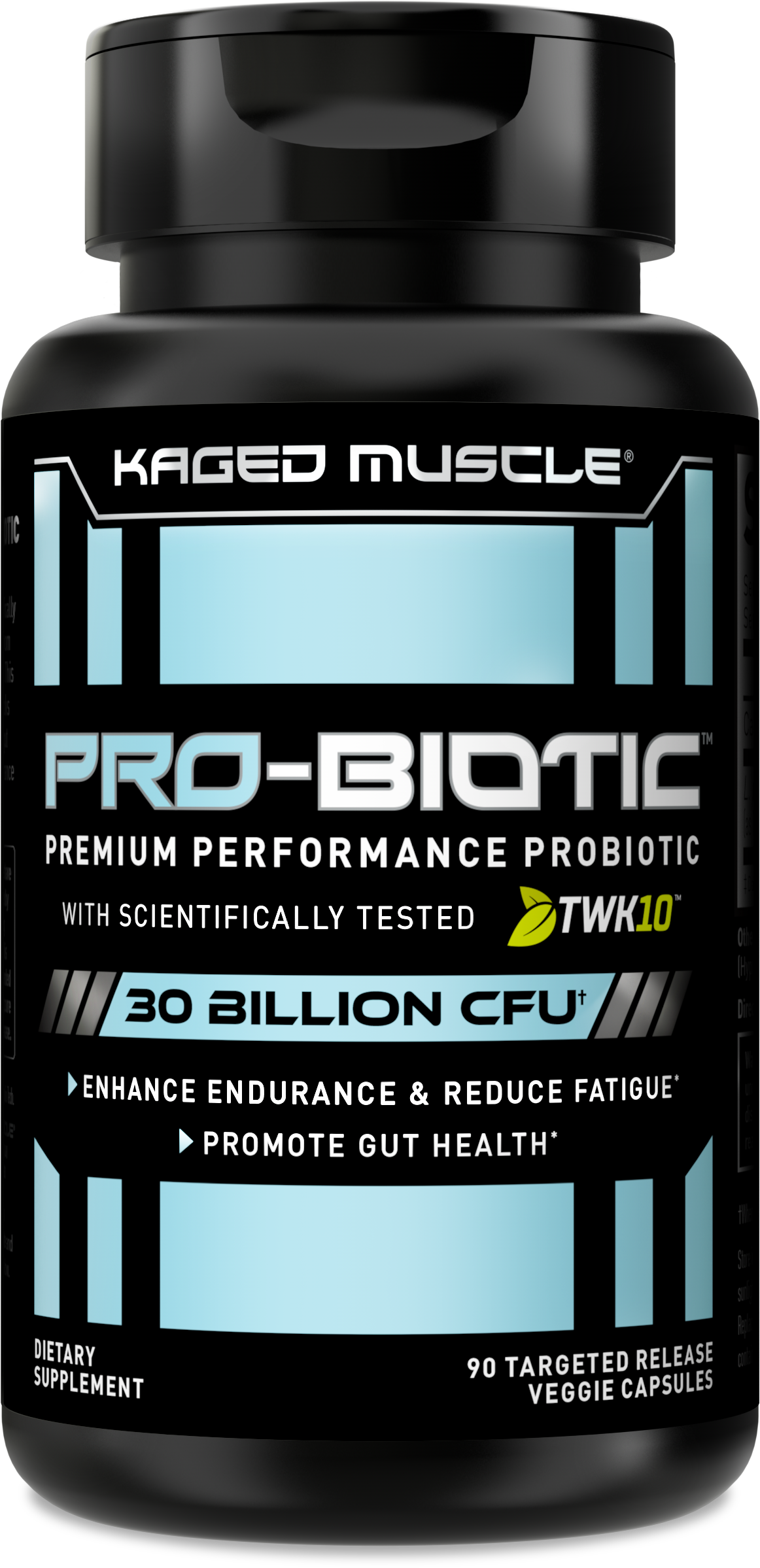
Kaged Muscle Pro-Biotic: Finally, a probiotic supplement for athletes who want something more than just gut health improvements!
There are likely far more benefits that we either missed or simply haven't been studied yet.
We liken this research to that of creatine: by helping your body produce more ATP, you get numerous benefits that go well beyond any single target. Since ATP (adenosine triphosphate) is our body's token of energy, improved ATP levels can improve overall mitochondrial health and function, and given that the mitochondria (the cells' "powerhouses") are basically everywhere, this leads to improved health nearly everywhere!
Understanding that, the diverse list of benefits shown above is unsurprising, given how L. plantarum takes a diverse array of carbohydrates and leaves us with even more ATP.
Like goats grooming your backyard
You can consider L. plantarum to be like a goat -- it'll eat nearly anything. A very simple analogy is that you're putting these goats into the backyard of your stomach and they're eating lots of carbohydrate matter that may not have otherwise been processed, and they're excreting wonderful ATP to fertilize your body.
This is partially in jest, but any bacteria that can take carbs and give us more ATP is something athletes should be aware of.
The question now comes down to the athletic research, and how Kaged Muscle's strain is different from those in the research cited above.
Understand the gut-muscle axis
The story begins with the gut-muscle axis, which is a series of pathways connecting the gut and the muscle:[57]
- Myostatin/activin signaling pathway,
- IGF1/PI3K/AKT/mTOR signaling pathway,
- NF-kB signaling pathway
- FOXO signaling pathway
The general gist is that optimal gut bacteria function is required for optimal skeletal muscle function,[58] since our muscles cannot get the nutrients and substrates they need if the gut cannot process and deliver them!
This is a growing field of research, with new studies published at an accelerating clip. A study published in 2020 is even titled Gut-Muscle Axis Exists and May Affect Skeletal Muscle Adaptation to Training,[59] discussing some of the research on L. Plantarum. It states that
"optimal intestinal microbiota composition may have an impact on muscle protein synthesis and mitochondrial biogenesis and function, as well as muscle glycogen storage"...
..."supplementation with probiotics may have some beneficial effect on aerobic and anaerobic performance. The phenomenon of gut-muscle axis should be continuously explored to function maintenance, not only in athletes."[59]
It goes without saying -- if you cannot absorb it, you cannot utilize it! So now it's time to look at Kaged Muscle's probiotic strain, TWK10:
TWK10: A patented Lactobacillus Plantarum strain
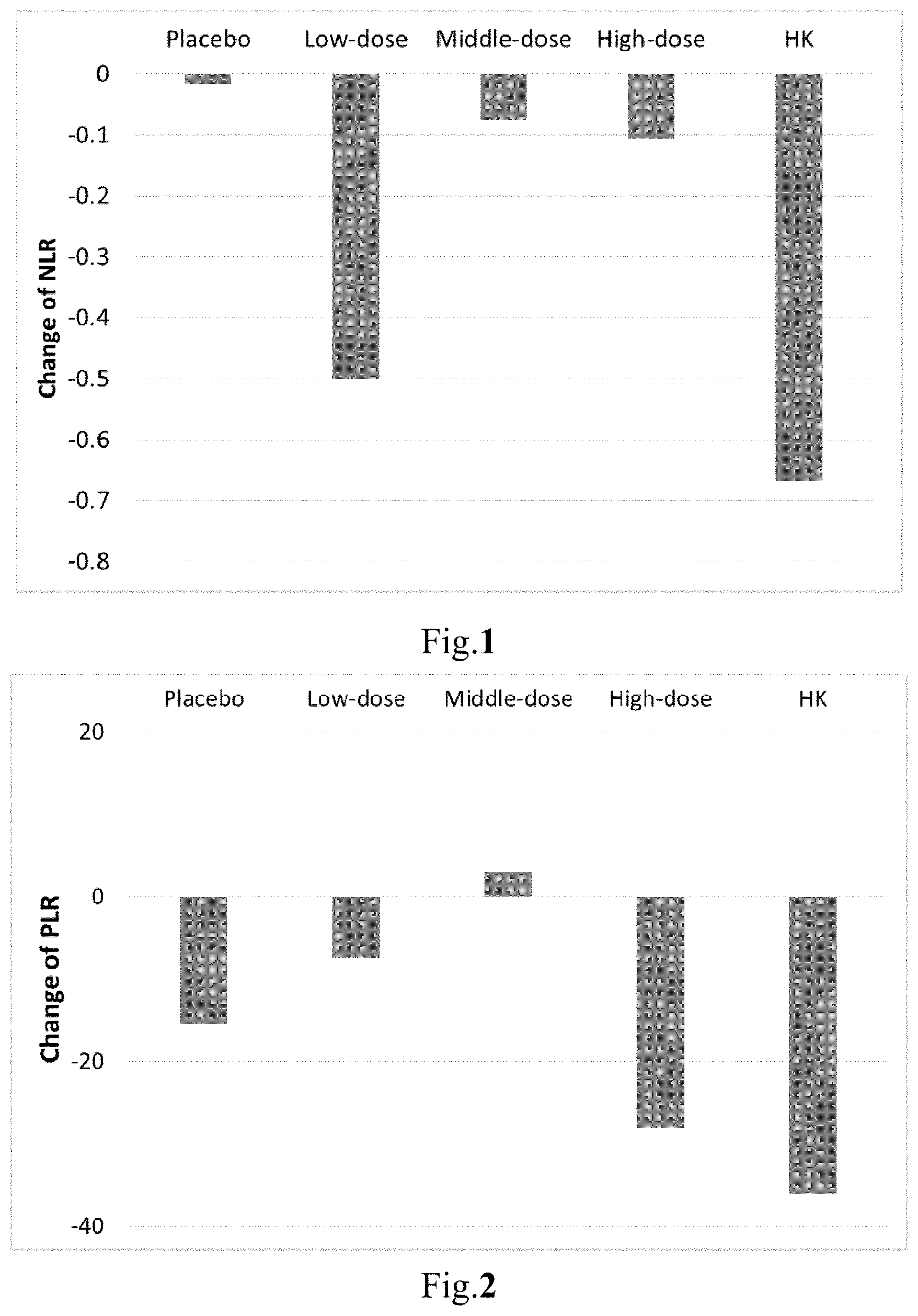
From the TWK10 Patent, reducing the neutrophil to lymphocyte ratio (NLR) and platelet to lymphocyte ratio (PLR)[1]
Knowing all of the incredible effects that Lactobacillus Plantarum is capable of, and understanding the importance of a healthy gut-muscle axis, researchers set out to make L. plantarum even better -- at least in terms of athletics.
Isolating and separating strains of L. plantarum in fermented Taiwanese cabbages, researchers at a company named Synbio Technologies patented a probiotic named TWK10 capable of "reducing a neutrophil to lymphocyte ratio (NLR) and a platelet to lymphocyte ratio (PLR)", yielding improved inflammation biomarkers post exercise.[1]
In their patent, they cite one of the two studies that demonstrate the potential of this ATP-boosting bacteria:
-
TWK10 Improves Exercise Performance and Increases Muscle Mass in Mice
A study published in Nutrients in 2016 took mice and divided them into three groups:[4]
- Oral administration of TWK at 2.05x108 units/kg/day (low-dosed group)
- Oral administration of TWK at 1.03x109 units/kg/day (high-dosed group)
- Control group
After testing baseline parameters, they ran this for six weeks. At the end, the researchers measured paw strength and how long the mice could last in the water before they couldn't keep their heads up. They also measured for various inflammation and exercise-induced biomarkers such as lactate, ammonia, and others.[4]
At the end of the study, both TWK groups saw improvements to the following parameters, with the higher-dosed group's improvements being more significant:[4]
- Increased relative muscle weight (by percentage) and decreased body weight
- Increased grip strength and endurance swimming time
- Decreased post-exercise levels of serum lactate, ammonia, creatine kinase, and glucose
- Increased amount of type I (slow muscle) fibers
- Decreased serum levels of albumin, blood urea nitrogen, creatinine, and triacylglycerol
The researchers concluded the following:
Long-term supplementation with [TWK10] may increase muscle mass, enhance energy harvesting, and have health-promotion, performance-improvement, and anti-fatigue effects.[4]
With incredibly successful animal research done, it was now time to move on to humans:
-
Healthy Human Study 1: TWK10 on Exercise Physiological Adaptation, Performance, and Body Composition
In 2018, researchers next published a double-blind, placebo-controlled clinical study on TWK. They recruited 16 healthy male adults between 20-40 years old, and put 8 into the TWK10 group and 8 into the placebo group.[2]
They tested exhaustive treadmill exercise measurements and also drew blood to test for related biomarkers. After six weeks of supplementation (each TWK10 capsule contained 1x1011 CFU L. plantarum TWK10) and no dietary/caloric changes, they re-tested the exercise and re-drew blood.[2]
The TWK10 group had significantly better endurance performance and glucose content in the max-treadmill test compared to placebo.[2] They also had lower lactate and ammonia levels, although those were not to the level of statistical significance compared to controls.
"Our results suggest that L. plantarum TWK10 is safe for use with the potential for further development, especially in sports science."[2]
-
Healthy Human Study 2: TWK10 on Exercise Physiological Adaptation, Performance, and Body Composition
Never satisfied, the researchers sought confirmation in another human study, published in Nutrients in 2019. They recruited 54 healthy individuals (27 men and 27 women) aged 20-30, splitting them into three groups of 18 each, split evenly between men and women:[3]
- low-dose TWK10 (3x1010 colony forming units (CFU) per day)
- high dose TWK10 (9x1010 CFU per day)
- placebo
Similar to the above studies, they began with functional assessments, including an exhaustive treadmill exercise at 85% VO2max and drew blood to measure related biomarkers.[3]
The participants then took their capsules (three per day, after meals) for six weeks.
After six weeks, the researchers re-ran the tests, and found that TWK10 significantly increased exercise performance in a dose-dependent manner and helped with physiological adaptation to exercise.[3] Body composition also improved (especially for the high-TWK10 group), but not to a level of significance.
Weight loss with muscle gain!
Interestingly, the placebo group lost the most weight, but also lost muscle -- whereas the TWK10 groups (especially the high-dosed group) lost weight and gained muscle -- a "holy grail" of training and supplementation.
While not statistically significant, take a look at these body composition improvements - weight loss with muscle gain![3]
Note that this was done without any exercise interventions - they didn't prescribe any exercise programs to the participants.
The researchers concluded:
"Taken together, our results suggest that TWK10 has the potential to be an ergogenic aid to improve aerobic endurance performance via physiological adaptation effects."[3]
Ultimately, TWK10 is an incredibly promising probiotic supplement, whether you're an athlete or not. It has a common sense mechanism: make more ATP, improve performance and overall mitochondrial health.
Pro-Biotic Dosage
Just like in the above human-based studies, Kaged Muscle Pro-Biotic should be used three times per day, with one capsule taken at each meal.
Targeted-release capsules
The above dosing helps keep the TWK10 active in the gut, but Kaged Muscle takes it a step further: Pro-Biotic utilizes targeted release capsules that ensure that the ingredient isn't broken down too early in the stomach. This helps get a better release in the intestines, so that they're not destroyed by the stomach's acidic environment.
A Kaged Muscle Kind of Pro-Biotic
Kaged Muscle has been bringing us innovations for years, and there seems to be no stopping to that storyline. They were one of the first to utilize a monster dose of L-citrulline in their Pre-Kaged pre workout, their CreaClear creatine monohydrate technology is the most underrated creatine on the market, and now they've brought the fascinating Lactobacillus plantarum to the sports nutrition industry with TWK10 in Pro-Biotic.
Sometimes, the supplements don't need to be as complex as some make it out to be -- yes, there is a ton that we don't understand about the gut-muscle axis and other benefits that eating fermented foods or probiotics can bring. But the long and short of it here is that we have a probiotic strain that can take a whole slew of carbohydrates and turn them into readily-available ATP. The ATP gets used for energy throughout the body, and the rest is history.
On the note of CreaClear, that would be our slam dunk stacking recommendation here, along with any other supplements like Kaged Muscle's Omega-3, Hydra-Charge, Pre-Kaged, the award-winning Plant Protein, etc that you'd like to use throughout your day.
Anytime we can find a way to strategically make more ATP and feel better, we're interested. With two human-based placebo-controlled studies, this one has a lot of legs do it, and we're excited to see it brought to our readers.
Today, Kaged Muscle taught us that probiotic supplements are no longer just for dieters with digestive problems. They're for everyone -- just make sure you get a strain that does what you want it to do... and TWK10 is exactly that strain for athletes.
Kaged Pro-Biotic – Deals and Price Drop Alerts
Get Price Alerts
No spam, no scams.
Disclosure: PricePlow relies on pricing from stores with which we have a business relationship. We work hard to keep pricing current, but you may find a better offer.
Posts are sponsored in part by the retailers and/or brands listed on this page.
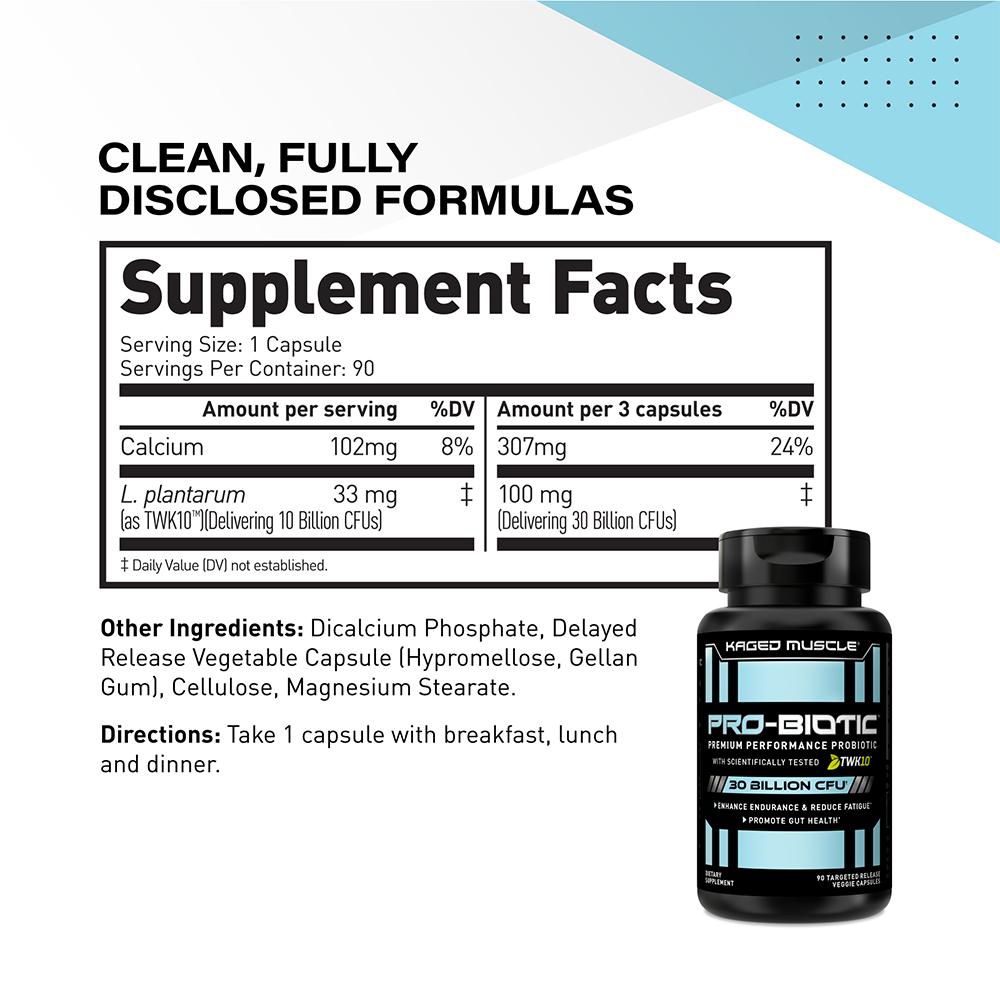
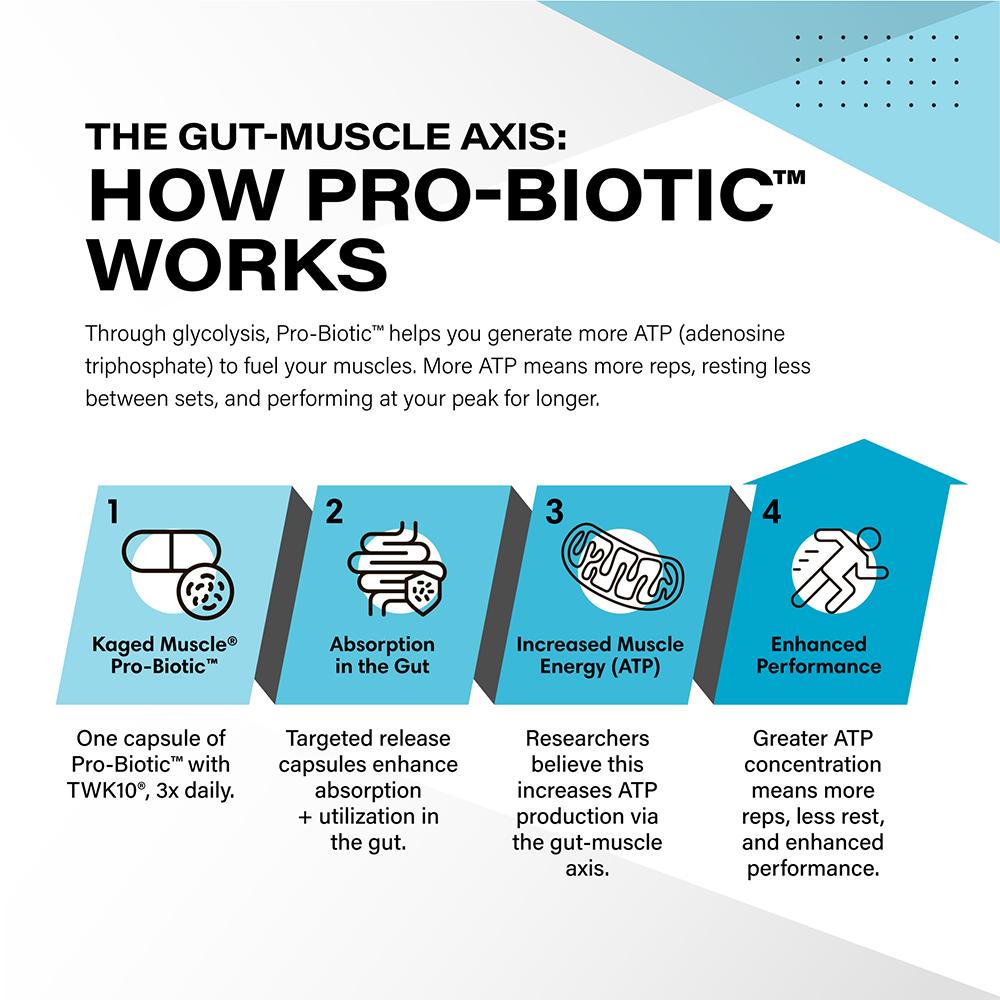
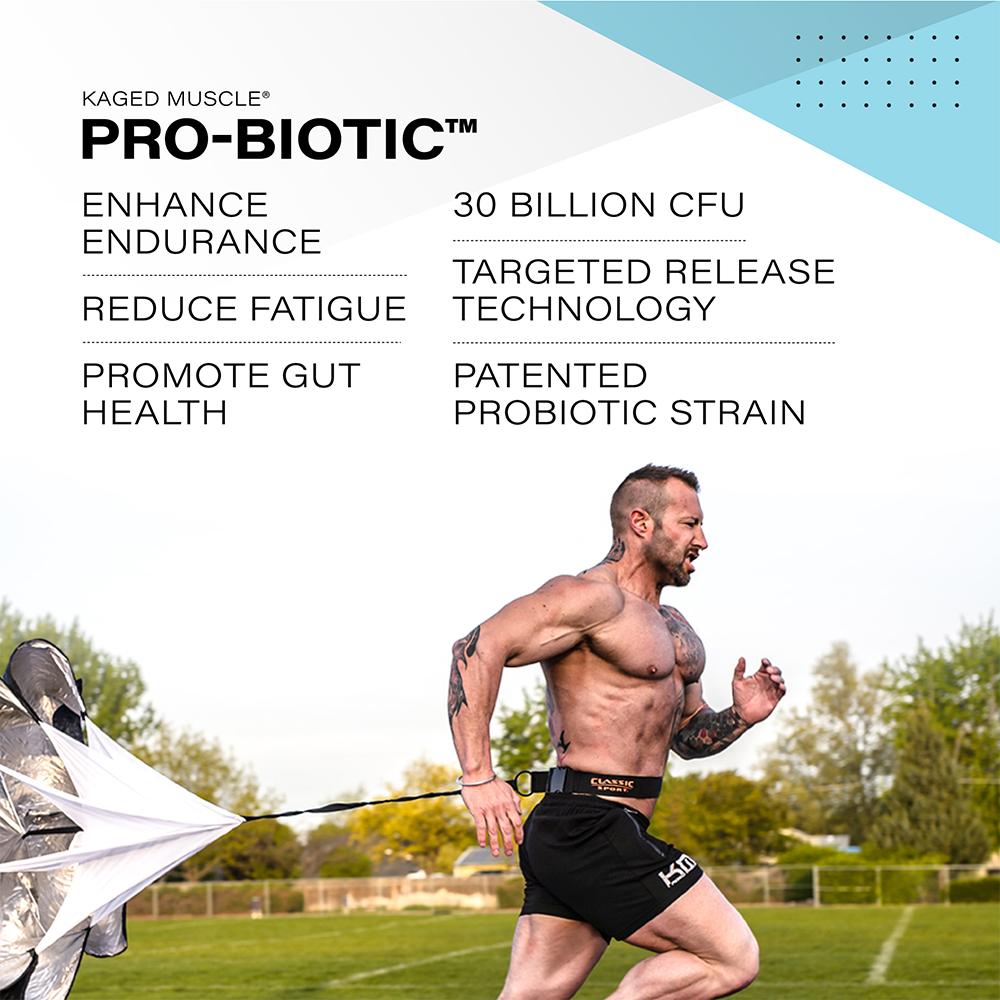
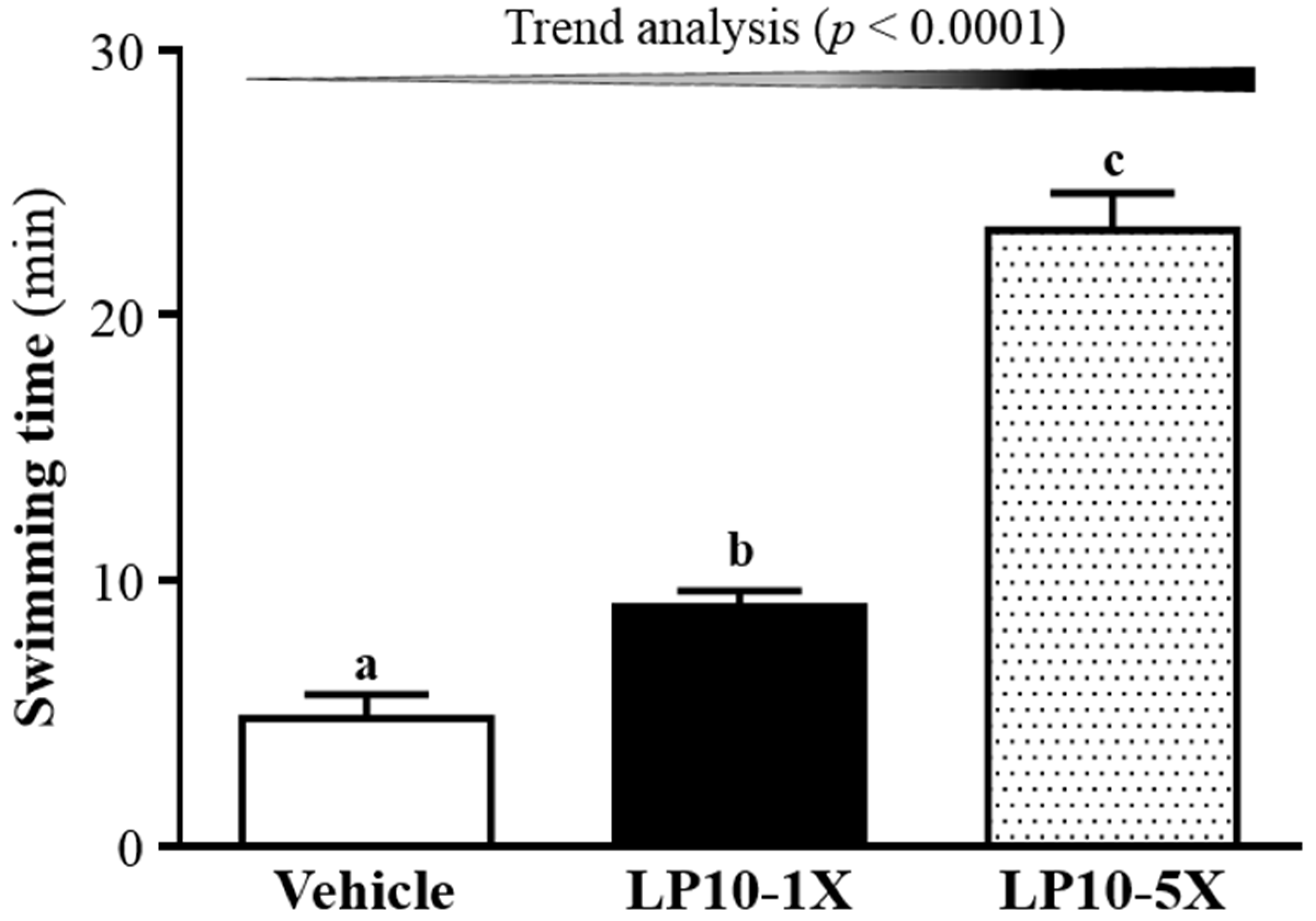
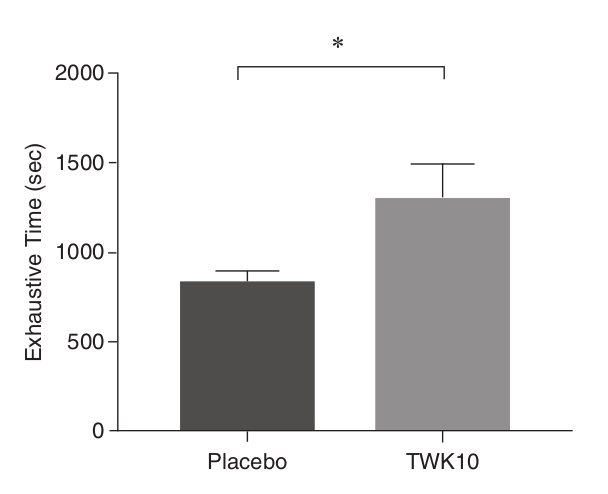
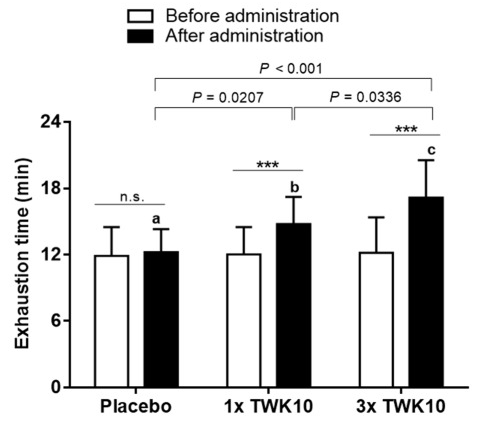
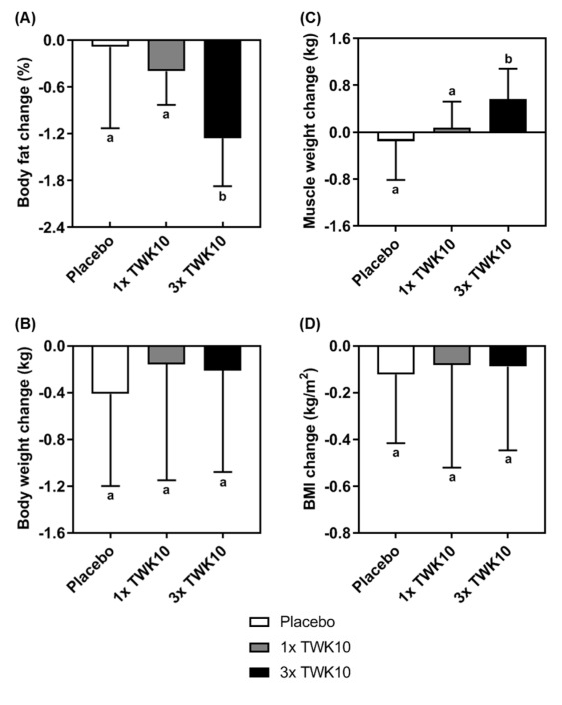
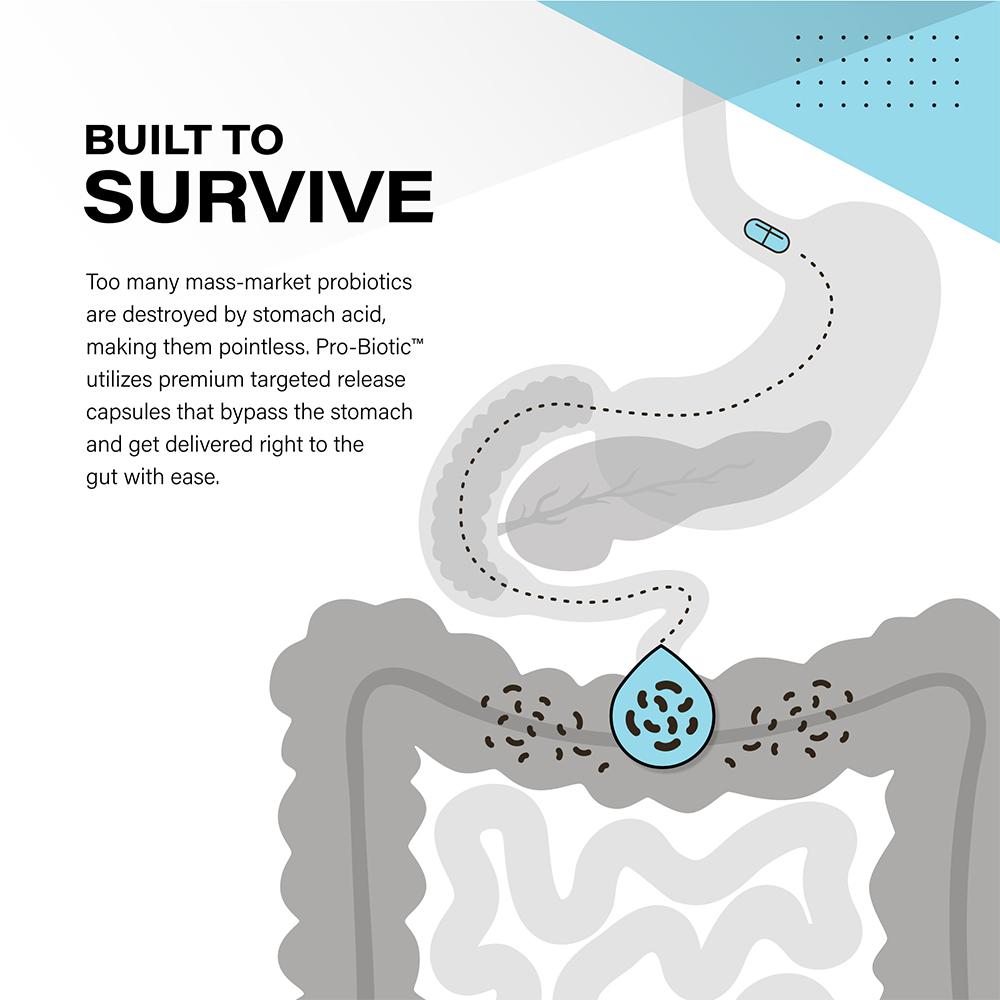
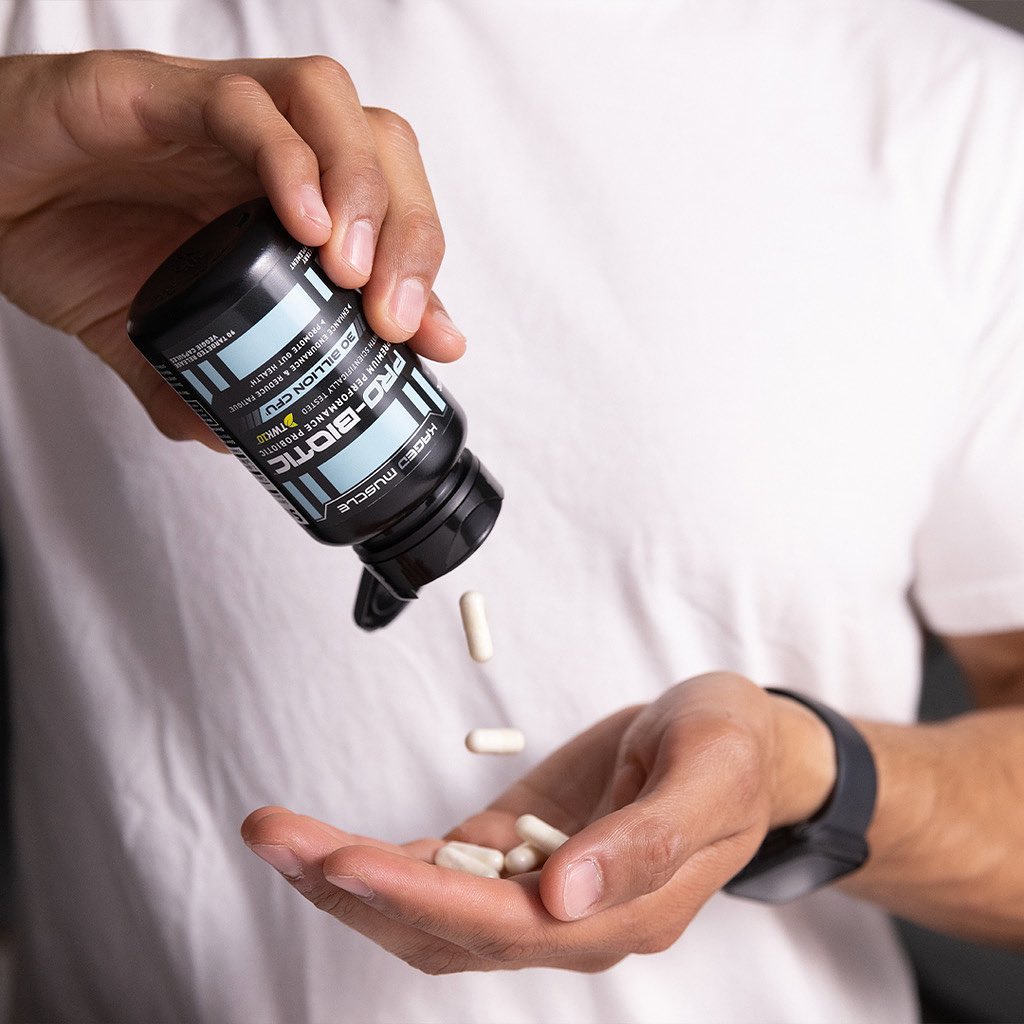


Comments and Discussion (Powered by the PricePlow Forum)